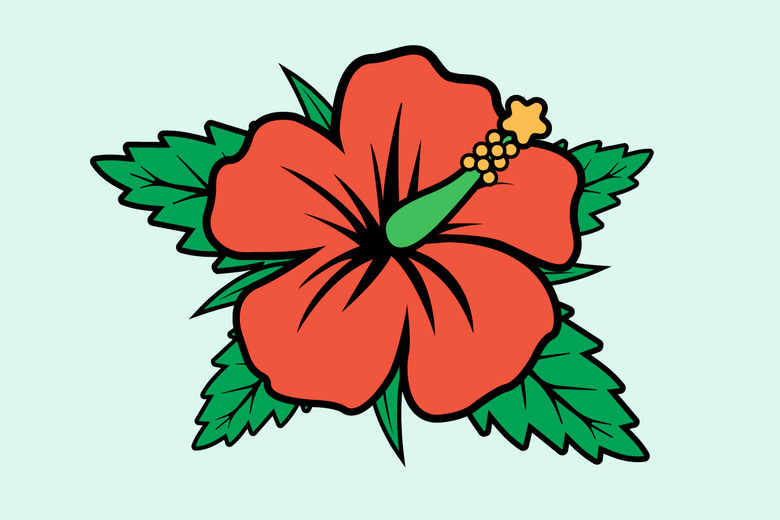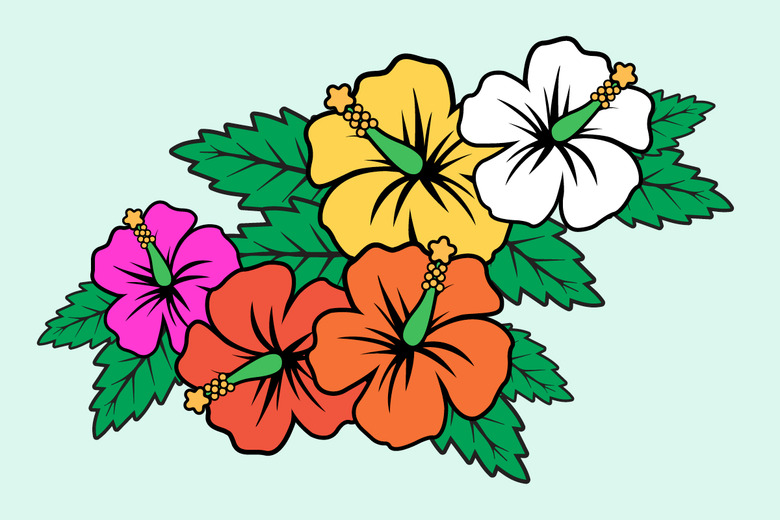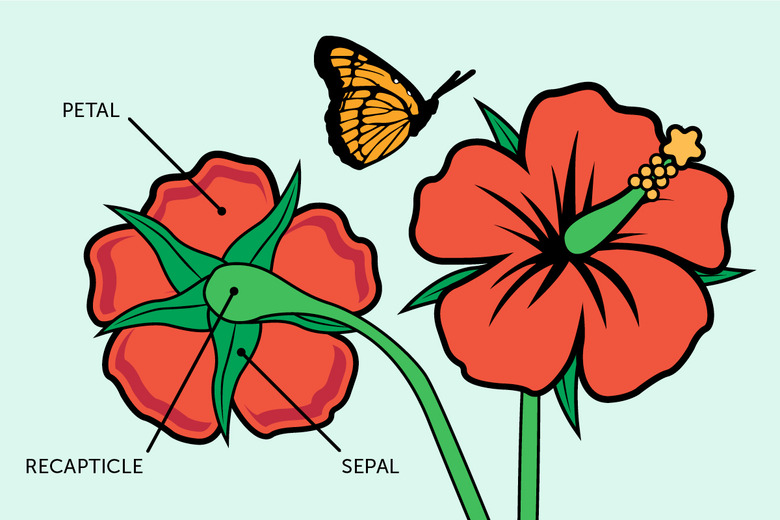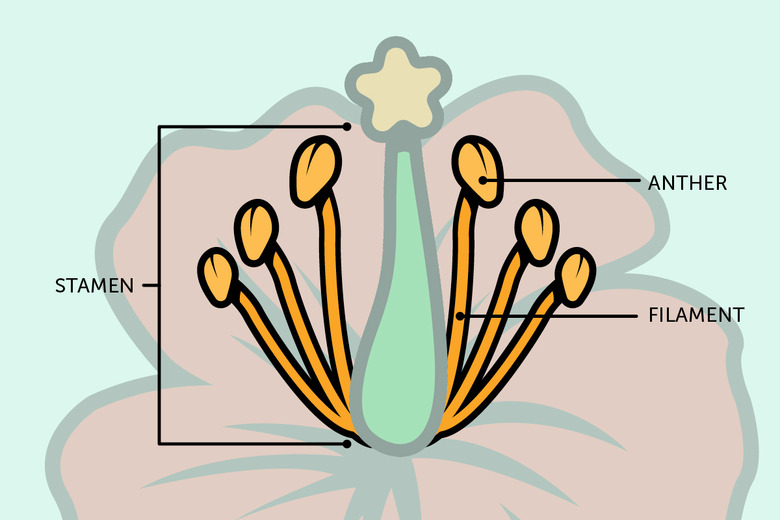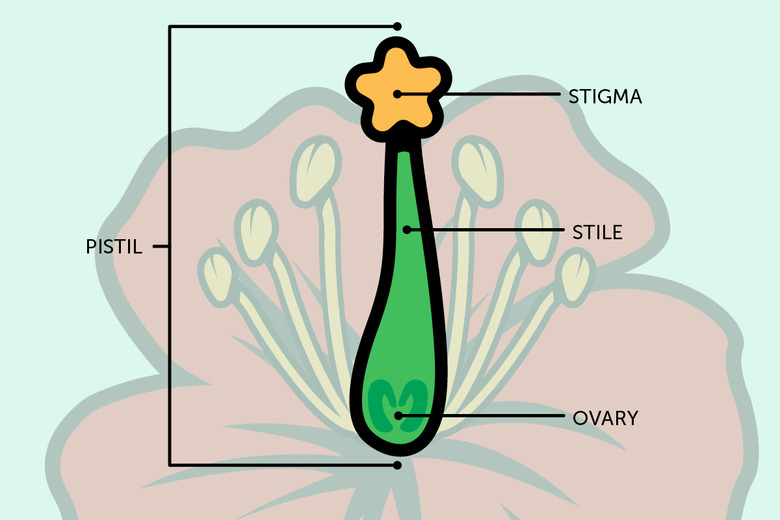Parts Of The Gumamela Flower
Many peoples lay claim to lovely rose hibiscus (Hibiscus rosa-sinensis). It's called Chinese hibiscus, Hawaiian hibiscus and, in the Philippines, the gumamela flower. The large shrub holds onto its green leaves all winter in U.S. Department of Agriculture plant hardiness zones 9 through 11, and attracts attention with its gorgeous, flared flowers. Like other flowers, hibiscus blossoms have petals, as well as male and female organs for reproduction.
Showy Hibiscus Flowers
Showy Hibiscus Flowers
The leaves are glossy and vibrant, the graceful stems arc to 12 feet high. But the glory of the hibiscus is its flower, a bright bell up to 6 inches in diameter that serves as a magnet for gardeners and hummingbirds alike. In frost-free gardens, hibiscus plants flower profusely and continuously. Each blossom — white, pink, orange, red, yellow and every shade and combination in between — lives for two days only. You can makes its brief stay more meaningful if you understand the different, complex components that, like hieroglyphics placed together, spell out its lush beauty.
Petals: the Pretty Parts
Petals: the Pretty Parts
Flowers delight us, but that is not actually part of their job description. The primary responsibility of the brilliant hibiscus petals is to attract the insect pollinators that the flowers rely on in the wild. Each species hibiscus has five free petals, growing out of the stalk and held on the recapticle, but cultivars offer double flowers too, with more petals. Beneath the flowers you can spot the sepals, petal-like structures that close over and protect the flower bud before it opens. Together these sepals are known as the calyx.
Stamen: the Boy Parts
Stamen: the Boy Parts
The hibiscus flower has a long tube that extends from the center of the flower beyond the petals and makes the flower seem to be sticking out its tongue. This tube houses both the male and female reproductive organs of the flower. Male parts are collectively termed the stamen. Each stamen consists of the filament, the name given to the long stamen stalk, and the anther, a sack on the tip of the filament that is full of pollen grains. It is these grains that fertilize the female parts of the hibiscus flower.
Pistil: the Girl Parts
Pistil: the Girl Parts
Female flower parts are called, collectively, the pistil. The female equivalent of the filament is a hollow tube called the stile. The sticky "lips" at the top are termed the stigma, and their job is to catch and hold onto pollen grains. The grains pass down the tube of the stile and lodge in the swollen base, the ovary. This is where the flower produces its eggs. If the eggs are fertilized by the pollen, they develop into seeds that propagate the species.
